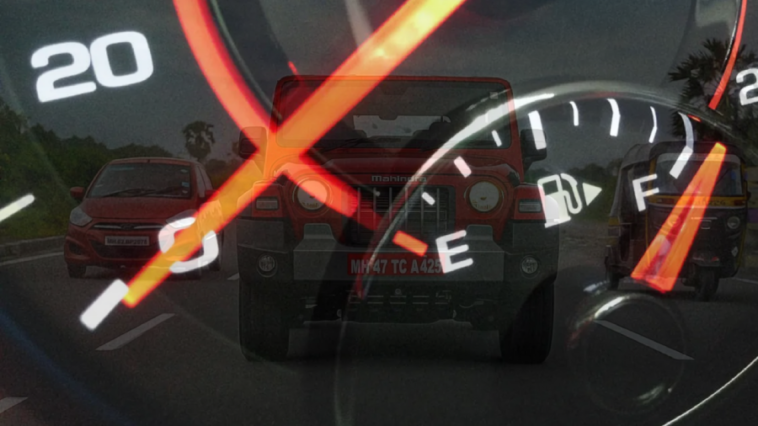Why 4X4 Vehicles Consume More Fuel? When it comes to talking about off-road vehicles or SUVs, we all started thinking that now what about fuel and mileage, because SUVs especially when they are in the 4X4 mode often consume more fuel which impacts the mileage and also your pocket. However, we all know that in such a mode engine delivers more power due to which it consumes more fuel as compared to other modes. So, today, here we will talk deeply about why 4X4 cars or way consume more fuel. If you want to know about this then be here till the end.
4×4 (four-wheel drive) vehicles have long been admired for their off-road capabilities and enhanced traction on slippery surfaces. However, one common drawback of 4×4 cars is their tendency to consume more fuel compared to their two-wheel drive counterparts. So, as we told you that here we will talk about the engine and its performance, so scroll on to read the complete article to explore the reasons behind this higher fuel consumption and discusses how engaging the 4×4 mode affects mileage.
Why 4X4 Cars Consume More Fuel?
4X4 cars, also known as four-wheel drive vehicles, are designed to provide enhanced traction and off-road capabilities. While they offer excellent performance and stability in challenging terrains, they tend to consume more fuel compared to their two-wheel drive counterparts. The main reason behind this higher fuel consumption is the additional drivetrain components and weight. Four-wheel drive systems involve extra components such as transfer cases, differentials, and extra drive shafts that transfer power to all four wheels.
These components increase the overall weight of the vehicle, resulting in greater resistance and reduced fuel efficiency. Additionally, the mechanical drag generated by the extra components puts additional strain on the engine, causing it to work harder and consume more fuel. Despite the higher fuel consumption, 4X4 vehicles remain popular choices for those seeking off-road capabilities and all-weather performance. Well, here are a few points that will tell you about why it consumes more fuel, and how it impacts the overall performance and mileage.
1. Increased Weight and Drag
One primary reason for increased fuel consumption in 4×4 vehicles is their heavier weight. The added weight of the four-wheel drive system, including the transfer case, additional axles, and driveshaft, can result in a higher overall vehicle weight. This additional weight requires more energy to move the vehicle, thus leading to increased fuel consumption.
Moreover, 4×4 vehicles often have larger tires with more aggressive tread patterns, designed for off-road use. While these tires provide better traction, they also contribute to increased rolling resistance, which means the engine has to work harder to propel the vehicle forward, resulting in higher fuel consumption.
2. Power Distribution
In a 4×4 vehicle, power is distributed to all four wheels simultaneously, providing better grip and traction in challenging conditions. However, this constant power distribution requires additional energy from the engine, which in turn leads to higher fuel consumption. Unlike two-wheel drive vehicles, where power is only sent to either the front or rear wheels, 4×4 cars have to distribute power to all wheels, regardless of the terrain.
3. Engaging 4×4 Mode
When the 4×4 mode is engaged, whether manually or automatically, it can affect the vehicle’s fuel efficiency. In normal driving conditions, where all wheels do not require equal power distribution, having the 4×4 mode engaged when it’s not necessary can lead to unnecessary energy consumption. The additional mechanical components engaged in the four-wheel drive system put an extra load on the engine, resulting in higher fuel consumption.
4. Limited-Slip Differentials
Many 4×4 vehicles feature limited-slip differentials, which allow power to be distributed between the wheels with the most traction. While these differentials improve overall traction, they can cause increased fuel consumption. Limited-slip differentials operate by sending power to the wheel with the least resistance, which means that both wheels may not receive equal power. This uneven distribution can lead to increased fuel consumption, as the engine compensates for the difference in wheel speed.
5. Aerodynamic Considerations
The design of 4×4 vehicles often prioritizes off-road capability over aerodynamics. The higher ride height, larger front grille, and additional accessories like roof racks can significantly impact the vehicle’s aerodynamic efficiency. Poor aerodynamics create more drag, making the engine work harder to overcome the resistance, thus increasing fuel consumption.
How Does 4×4 Mode Impacts The Mileage?
While 4×4 vehicles offer improved traction and off-road capabilities, they do tend to consume more fuel compared to their two-wheel drive counterparts. Factors such as increased weight, larger tires, constant power distribution, engagement of the 4×4 mode, limited-slip differentials, and compromised aerodynamics all contribute to higher fuel consumption.
Finally, It is important for 4×4 owners to understand these factors and make informed decisions when engaging the 4×4 mode to optimize fuel efficiency. Manufacturers continue to work on developing technologies and improving vehicle designs to minimize the fuel consumption of 4×4 vehicles without compromising their off-road performance. Stay tuned with us to read more facts and information on automobile world.






GIPHY App Key not set. Please check settings